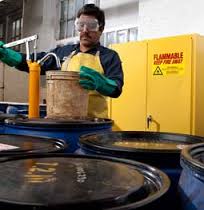Tens of thousands of workers become sick from exposures to the countless hazardous chemicals used in the workplace as part of a job function each day in the United States. These sicknesses sometimes result in long term, adverse health issues, and even death. OSHA, or the Occupational Safety and Health Administration – an offshoot of the U.S. Department of Labor – has recently launched two new web resources that should assist businesses with resources that will work toward keeping workers safe. 
Numerous types of chemicals are suspected of being harmful to people and to the environment, and many believe that OSHA’s criteria concerning exposure standards are out of date, not updated frequently enough, and provide inadequate information on how to enable complete protection from the hazardous chemicals that OSHA tries to regulate in the workplace. Therefore, to combat the perceived issue of insufficient protective resources, OSHA has put in place new resources to ensure maximization of its criteria standards. The first resource OSHA has created is a toolkit to help identify safer, cleaner chemicals that can be used as an alternative to the more hazardous chemicals. This toolkit takes industrial businesses, along with its workers, step by step through the methods, tools, and guidance information to help significantly reduce, or altogether eliminate hazardous chemicals, as well as help industrial businesses make informed substitution decisions in the workplace by finding, and then transitioning to a safer chemical.
OSHA has also recently created another new web resource, known as the Annotated Permissible Exposure Limits, also called annotated PEL tables. Annotated PEL tables help enable employers to voluntarily adopt newer, advanced, and more protective workplace exposure limits. OSHA’s annotated PEL tables appoint mandatory limits on the amount, or concentration of a chemical substance that could be released into the air to protect workers against the health effects of these hazardous chemicals. Due to concerns about OSHA’s ability to police the numerous hazardous chemicals in the United States, OSHA promises to continue to enforce its mandated PEL list. However, despite OSHA’s adoption of its annotated PEL table, the consistent flow of new scientific data, along with research industrial experts and developments in technology indicate that, in most instances, the mandatory limits put forth are still not sufficient enough to completely protect the health of workers.
Despite the pessimists out there that say OSHA has not established enough guidelines and resources regarding the improvement of worker safety through the enforcement of stricter chemical safety procedures, it is impossible to discount the effort made by the regulating body to improve the situation of too many hazardous chemicals used by industrial businesses. Ecolink works toward helping the circulation of resources and information made available to combat the use of hazardous chemicals.














